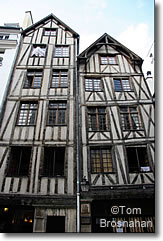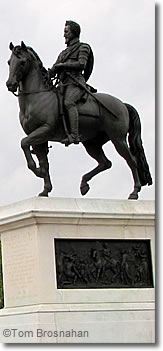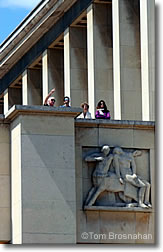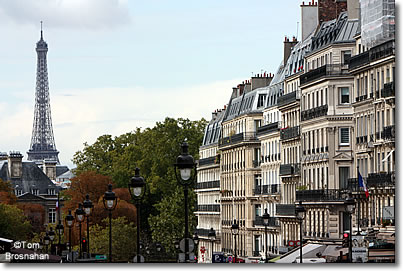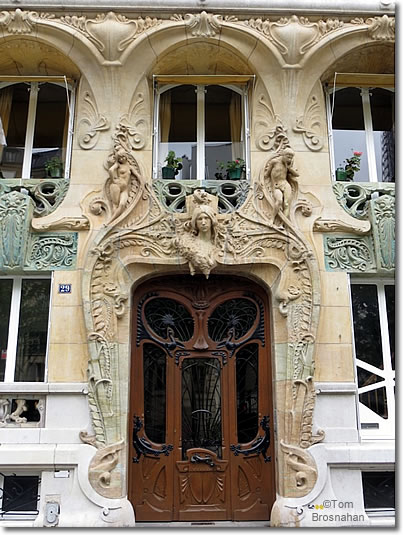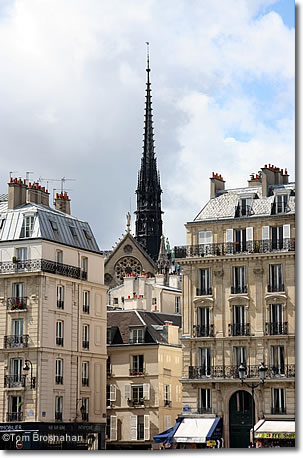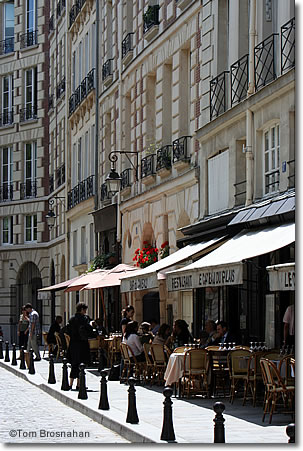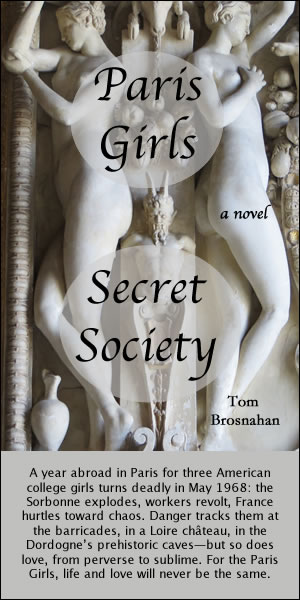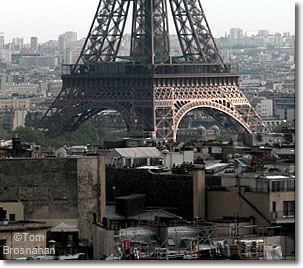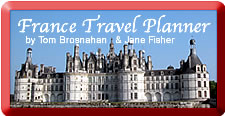 |
Architecture in Paris & France | |
|
Architecture is a prime reason why France—and especially Paris—is so beautiful. Here's how it happened.
|
||
|
|
|
Paris, perhaps the world's most beautiful city, did not happen by chance. The beauty of Paris is purposeful. Here's how it came about: Medieval ParisMedieval Paris was a mixture of half-timbered bourgeois houses and shops, the enclosed mansions of the nobility and clergy, and churches. Because the city's streets were controlled by the king, the crown could dictate the city's plan. Much of medieval Paris—with all its disadvantages of sanitation, light, air, and movement through the streets—remained until the 1800s, when most of it was swept away by urban redevelopment. However, a few authentic half-timbered buildings have survived the centuries of change to this day. Renaissance ParisIn the 1500s, the Renaissance brought the idea that a city should be not a haphazard collection of buildings, but a great architectural work based on classical models. The crown, the aristocracy and the church commissioned great buildings throughout the city. King Henri IV (reigned 1589-1610) extended the Classical ideal to the Paris of the common people by commissioning the construction of plazas and ordering the regulation of perspective streets. Regulated StreetsIn 1607, Henri decreed regulations for building frontages on streets, and established a body of inspectors to assure the regulations were obeyed. This gave rise to what is known as the architecture d'accompagnement, whereby the façades of all buildings on a street were to have an architectural harmony. When you look down a Paris street and take pleasure in its harmony, you can whisper a word of thanks to the great Henri IV, who started it all over four centuries ago. More of these rigid building regulations followed in 1783-84, 1823 and 1859. Napoléon III & Baron HaussmannEmperor Napoléon III appointed Baron Eugène-Georges Haussmann to be the Prefect of the Seine—in effect, the mayor of Paris—in 1853. Until 1870, when Haussmann was removed from that office, he carried out a vast urban renewal and beautification program that has given us most of the Paris of today. The streets of Paris began to take on a harmony that was improved in later centuries, and in large part has given us the beautiful Paris of today. Haussmann's effect on Paris was so profound that architects since his time have continued to complete his projects until 1927, and regulations today preserve his heritage.
Art NouveauThe Belle Époque (1871-1914) brought progress, prosperity and pleasure to Paris, and along with it, the naturalistic, mythical, sensual style called Art Nouveau. It affected architecture only late in the époque, and was brutally cut short by the outbreak of World War I, but Paris can boast several wonderful Art Nouveau buildings, perhaps the best of which is Jules Lavirotte's sumptuous building at 29 avenue Rapp, Paris 75007:
Art DecoParis was never captured in World War I. Though German artillery was able to lob shells into the city, damage was minimal. The sheer horror of the war put an end to dreamy, luxurious Art Nouveau. What arose from the ashes of war was a spare, economical, muscular style useful in rebuilding the shattered cityscapes of Europe. Art Deco sought to distance itself from the sumptuous, disastrous path and point to a strong, hopeful future. After WWI, Art Deco appeared in Paris and France, due largely to the effects of the war and the emergence of an international community of architecture. Destroyed cities such as Reims and Saint-Quentin rebuilt in the new, spare style. In Paris, architects gave expression to it in buildings such as the Palais de Chaillot. French sculptors such as Paul Landowski created monumental figures including the statue of Sainte Geneviève towering above Paris's Pont de la Tournelle, and his most famous work, the gigantic Christ the Redeemer statue atop Corcovado mountain in Rio de Janeiro. Paris even has an Art Deco church: the Église Saint-Pierre-de-Chaillot at 31 avenue Marceau, near the corner of rue de Chaillot, in the 16th arrondissement (map). ModernismIn northern France, cities devastated by World War II made plans for rebuilding even before the war was won. For Amiens, Paul Perret designed the impressive Modernist Gare d'Amiens complex and neighboring Tour Perret skyscraper Although the industrial suburbs of Paris were heavily bombed during WWII, historic central Paris was largely undamaged. Rebuilding of the suburbs could be in Modernist styles without doing damage to the harmony of the center. The western suburb of Boulogne-Billancourt was rebuilt in spare, clean Modernist style. 21st CenturyThe Parisian tradition of architectural excellence continues today. Have a look at the planned commercial and technical district of La Défense: striking but functional modern archtecture in a grand style worthy of Paris. The unusual Centre Georges Pompidou, highly controversial when it was built, is now an accepted part of Paris's cityscape. It's good to remember that the Eiffel Tower was also looked upon as a monstrosity when it was built—as indeed it was! Now the world—and Parisians—can't imagine the city without it.
|
|
Paris cityscape: everything has been
|
